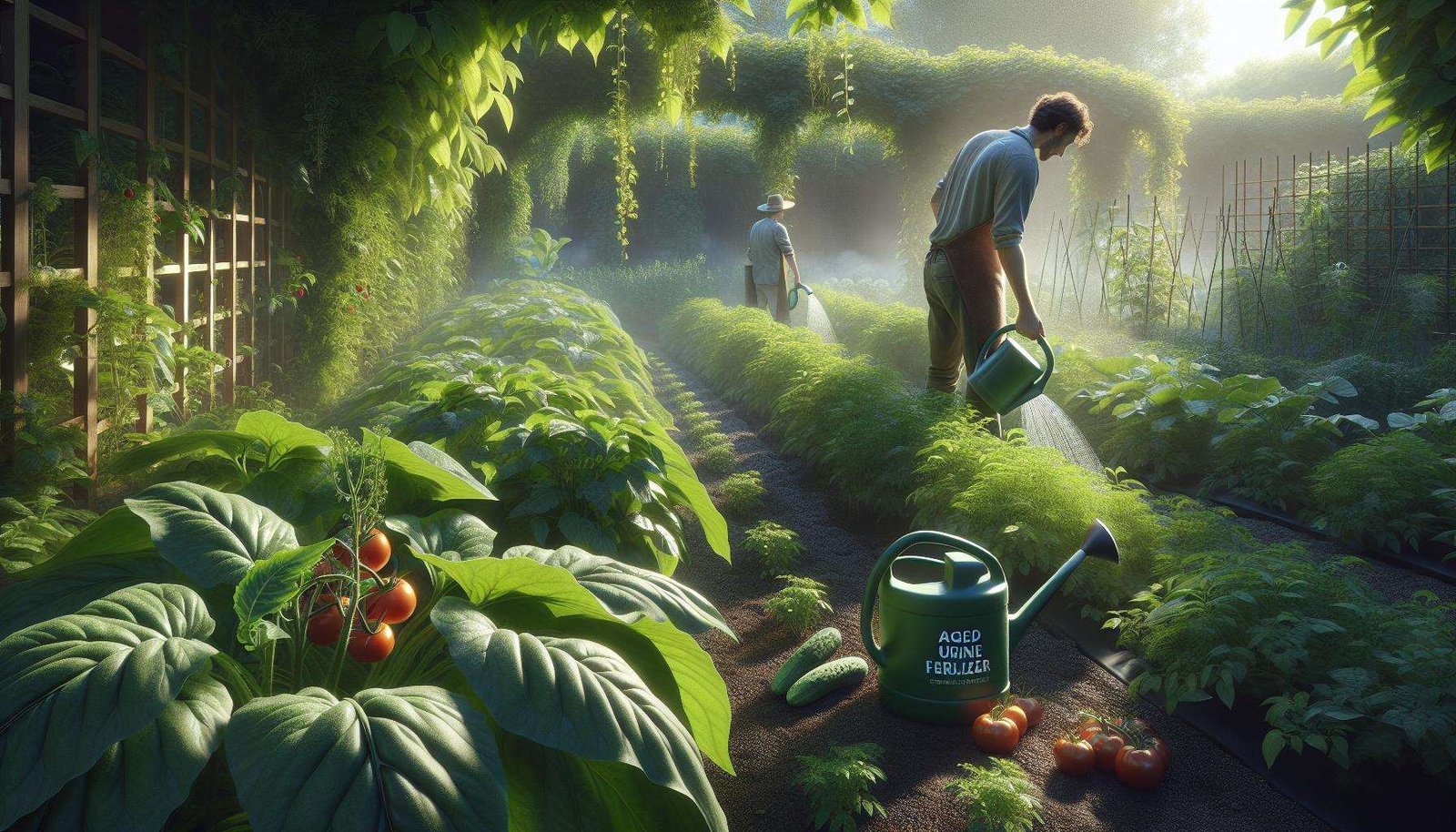
Think about a garden thriving without traditional fertilizers, or a pesticide that does not contaminate the earth with toxic chemicals. Well it turns out that you are carrying it around with you everywhere you go this magic fertilizer.
That’s the promise of aged human urine—a substance you might not immediately associate with agriculture but one that is gaining attention in environmental science. New research suggests that aged human urine acts as a potent pesticide and a valuable fertilizer, offering a green solution to some of the challenges faced by traditional farming practices. Let’s explore how this unique resource is shaping the landscape of sustainable agriculture.
Understanding the Science Behind Aged Human Urine
The concept of using urine in agriculture isn’t entirely new. Urine is naturally rich in nitrogen, phosphorus, and potassium—the essential nutrients found in commercial fertilizers. When urine is aged, it undergoes a process called ammonification. During this period, urea in urine, which is relatively harmless, transforms into ammonia. This conversion not only makes the nutrient content in urine more potent but also adds a strong, somewhat pungent smell that’s highly effective at deterring pests.
The ammonium present in aged urine has an alkaline pH, which can neutralize acidic soils, much like lime. This can also kill off pathogens and stop certain pests from proliferating as they do in more acidic environments. Moreover, the high nitrogen content supports healthy leaf growth in plants, much like traditional fertilizers.
Exploring the Environmental Benefits
Using aged urine as a pesticide and fertilizer brings several environmental benefits. Traditional chemical pesticides and fertilizers can leach into groundwater and become environmental hazards, disrupting ecosystems and harming wildlife. In contrast, human urine is biodegradable and, when properly managed, poses no significant risk to the environment. This makes it a sustainable alternative in agricultural practices.
Furthermore, by reusing human waste, we are closing a loop in the nutrient cycle that reduces dependency on mined phosphates and manufactured nitrogenous fertilizers. This helps decrease carbon emissions from industrial fertilizer production, lending a significant boost to climate change mitigation efforts. According to a report by the Environmental Protection Agency (EPA), the production of synthetic fertilizers is a notable source of greenhouse gas emissions.
Tangible Applications in Modern Agriculture
Many small-scale and subsistence farmers have started experimenting with urine as a fertilizer and pesticide. Some urban gardening projects have also embraced this practice, seeing it as a means to cut costs and reduce waste simultaneously. Appropriate storage and aging of urine are pivotal to its efficacy; typically, urine is stored for several months to ensure that pathogens are neutralized before application. Once aged, it can be diluted and used to fertilize soils, boosting food production sustainably.
In Sweden, researchers have explored urine recycling projects under the “URINE-tricity” program, aiming to process urine as a resource, rather than waste. You can learn more about their findings and methodologies from official research publications, such as those hosted by ScienceDirect.
Considerations and Social Implications
Despite its benefits, using human urine in agriculture is not without social and cultural considerations. Many people have natural apprehensions regarding hygiene and health risks. For safe handling, it’s crucial to ensure aged urine is correctly sanitized before use. The World Health Organization provides guidelines on sanitation and health to mitigate these concerns.
Additionally, integrating urine use raises questions about the scale of its adoption and potential policy shifts. Governments and environmental bodies must consider these aspects when promoting urine use, particularly in large-scale agriculture. Policies would need to consider public health guidelines to prevent nutrient runoff that could affect water bodies.
Scientific and Technological Innovations
Recent technological advancements have enhanced the potential for safely and efficiently using human urine in agriculture. Researchers are developing systems to process and sanitize urine, making it more viable for widespread agricultural use. Moreover, innovations in “urine diversion toilets” collect urine separately from other waste, streamlining the processing of this nutrient-rich resource. The development of bio-reactors that convert urine into fertilizer is another promising avenue being explored by researchers. This encourages the application of aged urine on a wider scale without compromising safety or efficiency.
The Road Ahead for Sustainable Farming
As the global population continues to rise, sustainable agricultural practices are more critical than ever. Solutions like aged human urine provide a compelling case for rethinking waste as a resource. While there are challenges associated with its adoption, both socially and technically, overcoming these could significantly contribute to a more sustainable farming model.
Countries worldwide are in various stages of adopting these practices, with some considering them seriously as part of broader agricultural reform strategies. You can read more about the global implications and potential for adoption in reports published by the Food and Agriculture Organization of the United Nations.
In conclusion, aged human urine reinvents a biological necessity into a tool of ecological stewardship and innovation. By understanding and embracing these unconventional solutions, humanity moves one step forward in its quest for sustainability—a greener, cleaner future where nothing goes to waste.
As interest grows in sustainable agricultural practices, perhaps it’s time to consider whether the urine you flush away could help fertilize the world’s future. It’s a pungent idea worth mulling over.
The post Aged Human Urine: A Pungent Pesticide and Eco-Friendly Fertilizer appeared first on Green.org.














